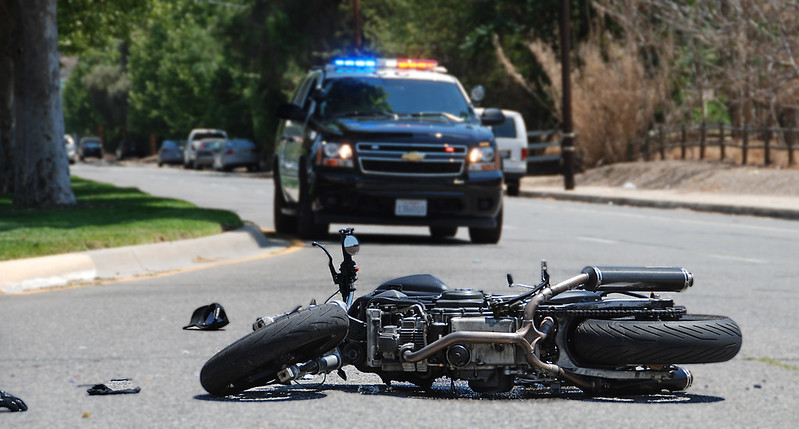Which Factors Lead to More Motorcycle Crashes Than the Others

Motorcycle crashes are often more severe than car accidents due to the vulnerability of riders. Understanding the key factors that lead to motorcycle crashes helps riders adopt safer practices. Several factors, including environmental conditions, rider behavior, and vehicle-related issues, increase the risk of accidents. In this article, we will explore the leading causes of motorcycle crashes and offer insights on how to mitigate these risks.
Human Factors That Cause Motorcycle Crashes
The majority of motorcycle crashes occur due to human error, such as speeding, lack of experience, or impaired driving.
Speeding
Speeding reduces a rider’s reaction time and increases the severity of accidents. According to the National Highway Traffic Safety Administration (NHTSA), speeding is a contributing factor in about 33% of fatal motorcycle crashes.
- Impact: At high speeds, motorcycles are harder to control.
- Risk Reduction: Obey speed limits and adjust speed based on road conditions.
Riding Under the Influence
Alcohol and drug use impair judgment, coordination, and reflexes, significantly increasing the chance of an accident. Around 27% of motorcycle riders killed in accidents in the U.S. had a blood alcohol concentration (BAC) above the legal limit.
- Impact: Impaired riders are less likely to react to hazards in time.
- Risk Reduction: Avoid riding after consuming alcohol or drugs.
Lack of Experience
New riders often lack the skills needed to handle complex road situations. Inexperience can lead to errors such as over-braking or poor cornering.
- Impact: Inexperienced riders are more prone to panic in emergencies.
- Risk Reduction: Take professional riding courses to improve skills.
Distracted Riding
Distractions such as using a mobile phone or adjusting music take the rider’s attention off the road. Even a brief distraction can lead to severe accidents.
- Impact: Diverted attention increases the likelihood of missing hazards.
- Risk Reduction: Stay focused and avoid multitasking while riding.
Environmental Factors Contributing to Crashes
Road and weather conditions play a significant role in motorcycle accidents. Riders must adapt their behavior to changing environments.
Poor Weather Conditions
Rain, fog, and snow reduce visibility and make roads slippery. Motorcycles are especially vulnerable to such conditions due to their smaller size and limited tire grip.
- Impact: Reduced traction increases the chances of skidding or losing control.
- Risk Reduction: Avoid riding in extreme weather when possible.
Road Hazards
Uneven surfaces, potholes, loose gravel, or debris on the road can cause motorcycles to lose balance. Construction zones also pose additional risks.
- Impact: Even small hazards can cause serious accidents.
- Risk Reduction: Be alert for road hazards and adjust speed accordingly.
Limited Visibility
Motorcycles are smaller and harder to spot, especially at intersections or in low light. Many crashes occur because other drivers fail to notice motorcycles in time.
- Impact: Cars turning left at intersections often collide with motorcycles.
- Risk Reduction: Wear reflective clothing and use headlights to increase visibility.
Vehicle-Related Causes of Motorcycle Crashes
Mechanical failures and improper maintenance can lead to accidents. Riders must ensure that their motorcycles are in proper working condition.
Tire Issues
Worn-out tires with poor tread reduce grip, especially on wet surfaces. Improper tire pressure can also make it harder to control the motorcycle.
- Impact: Tire blowouts at high speeds are extremely dangerous.
- Risk Reduction: Regularly check tire pressure and tread depth.
Brake Failure
Faulty brakes or improper use of brakes increase the risk of collisions. Riders must know how to balance the use of front and rear brakes.
- Impact: Sudden brake failure can lead to loss of control.
- Risk Reduction: Perform regular brake inspections and maintenance.
Electrical Issues
Malfunctioning headlights, indicators, or other electrical components reduce visibility and communication with other drivers.
- Impact: Without working lights, riders are at greater risk of collisions.
- Risk Reduction: Check electrical systems regularly for faults.
Statistics on Motorcycle Crashes
Understanding crash statistics offers insights into how and where accidents occur.
- Fatalities: In 2020, motorcycles accounted for 14% of all traffic fatalities in the U.S. despite representing only 3% of registered vehicles. [Source: https://crashstats.nhtsa.dot.gov/Api/Public/Publication/813306]
- Age Group: Riders aged 20-29 are involved in the most crashes, followed by those aged 30-39. [Source: https://lismoreapp.com.au/NewsStory/more-20-29-male-motorcyclists-killed-than-any-demographic/6714ed54f761e0002db5826d ]
- Helmet Use: The NHTSA reports that helmets reduce the risk of death by 37% and head injury by 69%. [Source: https://archive.cdc.gov/www_cdc_gov/policy/hi5/motorcycleinjury/index.html ]
- Time of Day: Most fatal crashes occur between 3 PM and 9 PM, during high traffic hours and reduced visibility. [Source: https://injuryfacts.nsc.org/motor-vehicle/overview/crashes-by-time-of-day-and-day-of-week/ ]
Preventive Measures to Reduce Motorcycle Crashes
Riders can reduce the risk of accidents by following safety protocols and adopting defensive riding strategies.
Wear Protective Gear
Wearing helmets, gloves, and protective clothing minimizes injuries in case of accidents.
- Benefit: Helmets significantly reduce the risk of head injuries.
- Tip: Always wear bright or reflective gear to improve visibility.
Follow Traffic Rules
Adhering to traffic signals, lane discipline, and speed limits reduces accident risks.
- Benefit: Following rules ensures smoother interactions with other vehicles.
- Tip: Avoid lane splitting, especially in heavy traffic.
Regular Motorcycle Maintenance
Routine maintenance ensures that brakes, tires, and electrical systems are in good working order.
- Benefit: A well-maintained motorcycle is safer to ride.
- Tip: Schedule regular inspections and address issues promptly.
Defensive Riding Techniques
Riding defensively involves anticipating potential dangers and reacting proactively.
- Benefit: Defensive riders are less likely to be caught off-guard.
- Tip: Maintain a safe distance from other vehicles and watch for sudden movements.
Conclusion
Motorcycle crashes often result from a combination of human errors, environmental challenges, and mechanical issues. Speeding, distracted riding, poor weather, and lack of maintenance are some of the primary factors leading to accidents. Understanding these causes helps riders adopt safer practices, such as wearing protective gear, maintaining their motorcycles, and following traffic rules.
By taking preventive measures and staying aware of the risks, riders can significantly reduce the likelihood of accidents and ensure a safer riding experience.
